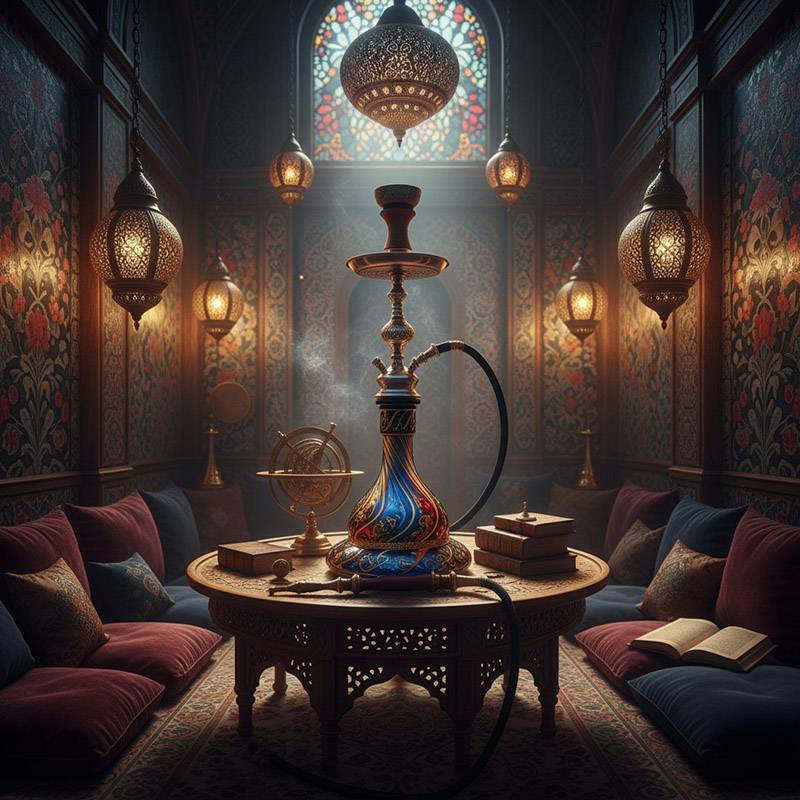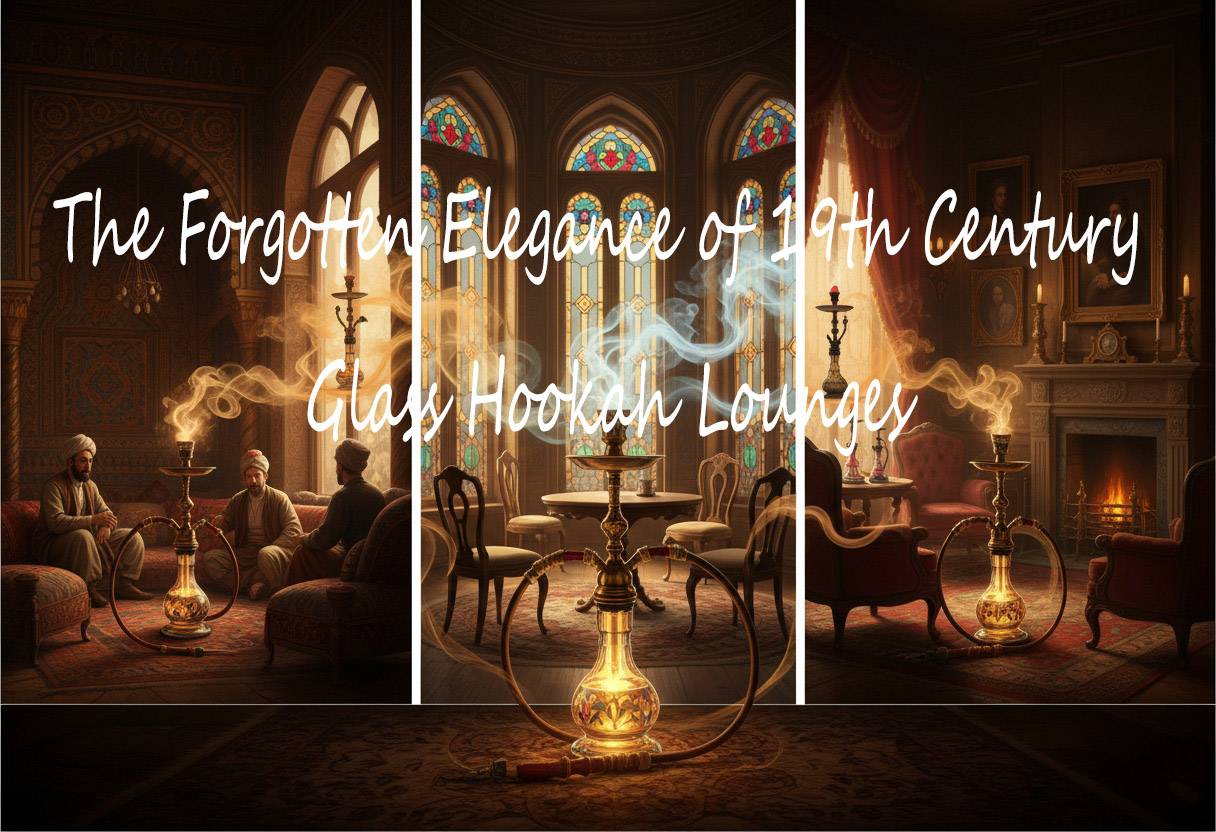> Blogs > The Forgotten Elegance of 19th Century Glass Hookah Lounges
The Forgotten Elegance of 19th Century Glass Hookah Lounges
Core keyword: 19th century glass hookah lounges
When we imagine hookah lounges today, we often think of neon lights, sleek glass bottles, and modern music. But over a century ago, 19th century glass hookah lounges were far more than casual smoking spots — they were places where culture, craftsmanship, and conversation intertwined. From Ottoman palaces to European salons, these early lounges and social spaces became key cultural hubs that reflected the evolving design of glass hookahs and the global fascination with the art of smoking.
How 19th Century Glass Hookah Lounges Became Cultural Landmarks
To understand their rise, we need to trace how glass hookah culture moved through empires, trade routes, and artistic circles — shaping social life from the Middle East to Europe.
From Empires to Parlors: The Birth of Glass Hookah Lounges
The 19th century was a period of unprecedented cultural exchange. As the Ottoman Empire expanded its influence and global trade routes flourished, hookah smoking traveled far beyond its Persian and Mughal origins. The introduction of glass hookah bottles — inspired by Persian shīsheh — gave rise to beautifully crafted bases that transformed traditional hookahs into aesthetic objects.
During this time, glass hookah lounges emerged in major cities like Istanbul, Cairo, Paris, and London. These were not hidden dens, but well-decorated rooms with carpets, lanterns, and low wooden tables, where intellectuals, aristocrats, travelers, and merchants gathered. They discussed politics, literature, art, and science while enjoying fragrant tobacco in exquisitely designed glass hookahs.

Ottoman Influence and Aesthetic Flourishing
In Istanbul’s 19th-century coffeehouses, glass hookah lounges became symbols of sophistication. The Ottomans embraced glass not merely as a functional material but as a canvas for artisanship. Bottles were hand-blown by skilled glassmakers, often featuring intricate engravings, gold leaf embellishments, and vibrant colors.
These spaces were designed to emphasize harmony between architecture and leisure: mosaic walls, hanging lamps, and soft cushions created intimate environments for long discussions. Hookah was not rushed; it was part of a social ritual that could last for hours.
Parisian and Victorian Adaptations
As European travelers experienced Ottoman hospitality, they brought home both the objects and the customs. In the 19th century glass hookah lounges of Paris, the atmosphere blended exoticism with high-society elegance. Aristocrats installed hookah rooms in their mansions, often decorated with Moorish arches and stained-glass windows. Hookah sessions were paired with poetry readings, music, and lavish soirées.
In Victorian England, hookah found a curious place in salons. While some saw it as a fashionable novelty, others embraced it as part of intellectual gatherings. Glass hookahs were displayed like rare antiques, and the lounges themselves reflected a blend of Eastern mystique and Western refinement.
The Decline and Legacy
By the late 19th and early 20th centuries, the rise of cigarettes, industrialization, and changing social habits led to the decline of traditional glass hookah lounges. Many were converted into coffee shops or disappeared entirely as cities modernized. Yet their legacy remains visible today — in the décor of modern hookah bars, the enduring craftsmanship of glass bottles, and the romanticized imagery of Orientalist paintings that depicted elegant smoking scenes.
Modern lounges may feature LED lighting and electronic music, but their DNA traces back to the 19th century glass hookah lounges that valued conversation, craftsmanship, and culture above all else.

✨ Conclusion: A Window into a Bygone Era
The story of 19th century glass hookah lounges is more than a tale of smoking spaces. It is a reflection of global cultural exchange, artistic evolution, and social rituals that shaped an era. By looking back at these historical lounges, we gain insight into how glass hookah culture became a timeless bridge between East and West.
✨ Additional Tips: Recommended Shisha Lounge Options in Dubai
While 19th-century lounges belonged to a different era, their spirit lives on in modern cities like Dubai. If you ever visit the Middle East, especially Dubai, you’ll want to visit one of the region’s renowned shisha lounges to experience a lively atmosphere reminiscent of the cultural spirit of glass hookah lounges. Here are two popular locations to explore:
📍 101 Umm Hurair Rd — Oud Metha
This shisha lounge is popular with locals and tourists alike, offering a wide variety of flavors and a sophisticated glass hookah experience in a relaxed and lively atmosphere. Open 24 hours, it’s perfect for a late-night get-together or a late-night chill-out spot, making it a great place to explore Dubai’s nightlife and traditional leisure activities.
📍 64 Umm Hurair Rd — Al Karama
This shisha lounge, located in a historic hangout area, blends local and Russian styles, creating a warm and unique atmosphere that’s especially lively at night. The wide variety of shisha flavors and glass hookah experiences attract young people and smokers, making it a great choice for those seeking an authentic nightlife experience away from the tourist trap.
If you ever visit Dubai, be sure to add these two places to your itinerary to experience how the city seamlessly blends the traditional spirit of glass hookah lounges with a cosmopolitan lifestyle.
✨ Keep Exploring Hookah Culture

- : info@shdcrystal.com
- : +86-755-2335 8353
- : No. 68 Shasong Road, Shajing Street, Bao'an District, Shenzhen, Guangdong Province
Follow us